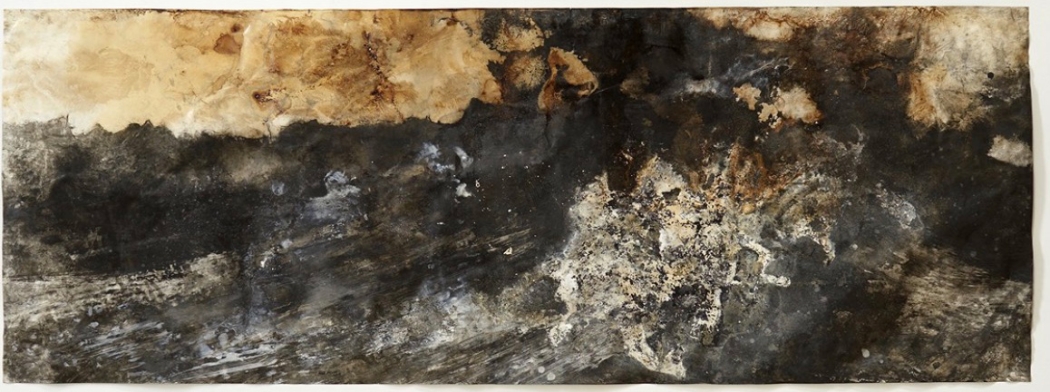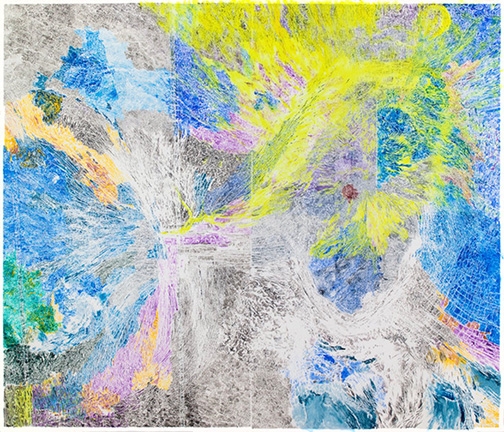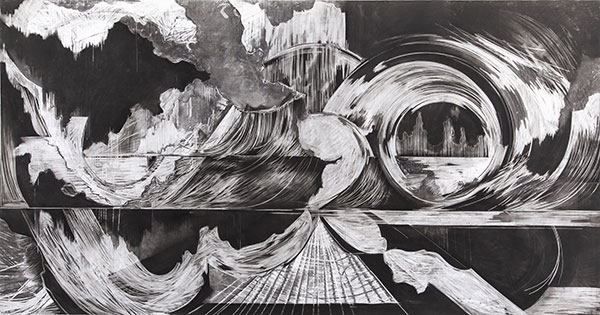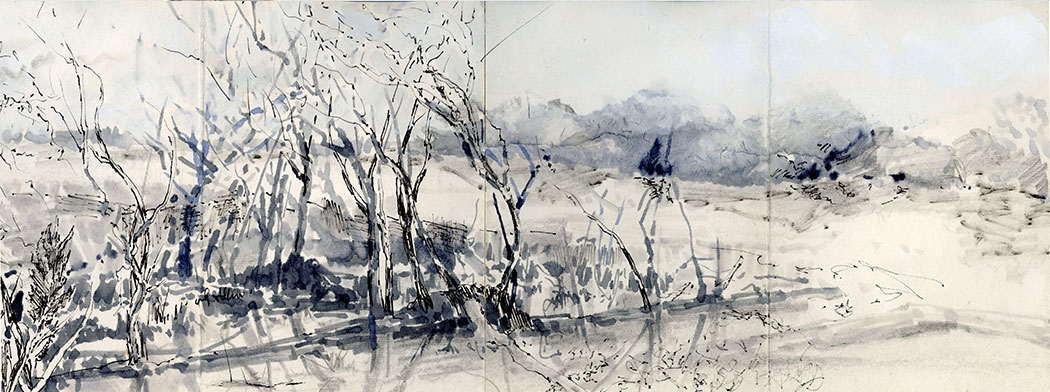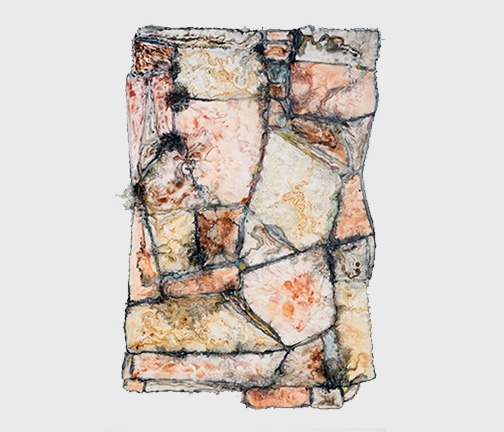“Satellite and Sediment,” the Department of Visual Arts’ winter term exhibition, features drawings and paintings by five acclaimed contemporary artists who question distinctions between human and natural systems.
The five are Athena LaTocha, Cynthia Lin, Beatrice Modisett, Barry Nemett and Sara Schneckloth. All but Schneckloth will be in attendance at the exhibition’s opening reception, set for Thursday, Jan. 19, 4:30-6:30 p.m. in the Feigenbaum Center for Visual Arts’ Crowell and West galleries.
They will give brief gallery talks at 5 p.m. The event is free and open to the public.
Manipulating satellite imagery, drone footage, collaged landscapes and foraged materials, the artists mingle close observation and lived experience, body and nature, realism and abstraction.
“Bringing us into their intimate conversations with nature, these artists encourage us to look closely at our own relationships with the climate around us, the sky above and the ground below,” says Laini Nemett, associate professor of visual arts – painting and drawing, and the show’s curator.
Alaskan-born LaTocha is a Hunkpapa Lakota and Ojibwe artist. She works her ink and earth drawings in concert with the land, often beginning them on and with the ground itself, letting the atmosphere, rain, sand and soil direct the piece.
Lin, based in Brooklyn, is an associate professor of painting and drawing at Purchase College. She reinterprets topographical details from NASA satellite imagery and magnified sections of skin with invented colors and unpredictable technical processes. Combining printmaking, scratch-board, solvent transfers, and oil on mylar, her large-scale works move from pores and hair follicles to lava flows and land boundaries.
Lin will give an Artist Talk Friday, Jan 20, 12:45 p.m., in Room 204. The event, which includes a catered lunch buffet, is co-sponsored by the departments of Visual Arts and Geosciences.
Modisett, based in Queens, uses handmade charcoal and wood ash from her property in upstate New York in her monumental drawings of waves, wind and extreme weather, suggesting a state between coalescing and collapse, forming and eroding.
Barry Nemett is professor emeritus of drawing and painting and former chair of the Painting Department at Maryland Institute College of Art. His accordion books combine multiple locations and climates, weaving intricate thickets and tree bark with expansive landscapes of patchwork fields, karsts and canyons across continents. He is the father of Laini Nemett.
Schneckloth, an associate professor in the School of Visual Art and Design at the University of South Carolina, forages natural material from New Mexico’s San Juan Basin to create pigments for her mixed media drawings. Based on low altitude drone footage, her loosely referential maps of the region’s banded topography suggest geological formations and extensive resource extraction, as well as less-visible divisions between public and private lands.
The exhibition runs through March 10.
